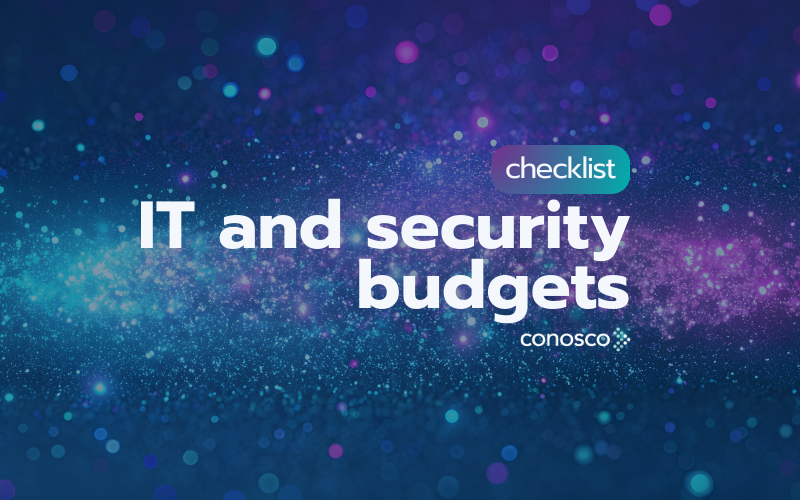Checklist: IT and security budget planning
by Aaron Flack on 2025

Be IT and security budget ready for the next financial year
For CEOs, Managing Directors, and Board Members of mid-size organisations, determining how much to allocate to cybersecurity and technology resilience has never been more critical. Rising costs, supplier inflation, and the growing sophistication of AI-driven threats add complexity to these decisions, making a strategic approach essential.
Organisations that fail to budget effectively for IT security often find themselves reacting to incidents rather than preventing them. In an era where shareholder trust, customer loyalty, and operational stability are at stake, balanced spending on cybersecurity and resilience is not just a necessity but a competitive advantage.
What’s inside...
-
Core Budgeting Areas
Identify key spending categories like cybersecurity tools, training, supplier risk assessments, and resilience strategies. -
Overlooked Essentials
Don’t forget about often-missed components, such as regulatory compliance needs, cyber insurance options, and inflation-driven cost increases. -
Planning for Emerging Threats
Incorporate considerations for the growing sophistication of AI-driven cyberattacks and the evolving threat landscape. -
Actionable Prompts
Gain practical advice to prioritise investments, assess return on investment (ROI), and align your budget with business objectives.
How you benefit
- Comprehensive Coverage
Ensure no critical aspect of cybersecurity or IT resilience is overlooked, reducing the risk of unexpected vulnerabilities. - Strategic Alignment
Tailor your budget to support overarching business goals, balancing operational needs with financial constraints. - Informed Decision-Making
Gain clarity on what to prioritise, helping you allocate resources where they’ll deliver the greatest impact. - Risk Mitigation
Prepare for both current and emerging threats, such as AI-enhanced attacks, to strengthen your organisation’s defences. - Cost Control
Avoid overspending on unnecessary tools while addressing rising costs with proactive measures like renegotiating vendor contracts. - Strengthened Trust
Bolster shareholder confidence and customer loyalty by demonstrating a commitment to security and operational resilience.
Why Use This Checklist?
This checklist is your go-to resource for building a robust and balanced IT and security budget. It ensures no crucial details are missed, encourages smarter decision-making, and helps you stay ahead of threats while aligning your spending with both current and future business priorities.

Blog post: Risk vs reward: balancing cyber budgets for the next financial year
Organisations that overlook the intricacies of cyber risk often find themselves in reactive mode: plugging holes after incidents occur rather than mitigating issues in advance.
FAQ
It ensures you account for all necessary areas, reducing risks and avoiding oversights that could lead to vulnerabilities or unplanned expenses.
Yes, it includes prompts to address AI-driven risks and other emerging challenges, keeping your organisation ahead of the curve.
Core areas include obvious categories like cybersecurity tools and training, while overlooked essentials focus on often-forgotten items like cyber insurance, compliance, and cost inflation.
Absolutely. It encourages smarter spending, helps avoid unnecessary expenses, and suggests cost-saving strategies like renegotiating contracts.
Use it during annual budgeting or when there are significant changes in your organisation’s operations, vendor relationships, or the threat landscape.

You May Also Like
These Related Stories

ebook: Board room guide to cyber threats
The ultimate guide on cyber threats Arm yourself with the knowledge, tools, and technical know-how to safeguard your business and stamp out security t …

Checklist: Switching MSPs
Ready to switch to a new Managed Service Provider? Here's how to get it right. Switching IT support providers is a high-stakes move. When your current …

Checklist: Cybersecurity for new CIOs and CISOs
The ultimate security checklist: vital for all new CIOs, CISOs and IT Directors. For new CIOs, CISOs, and IT Security Directors, having a comprehensiv …
